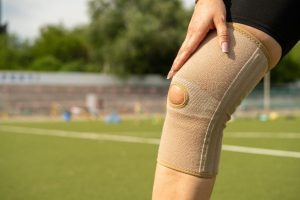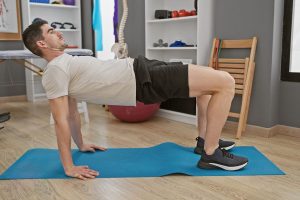Welcome back, everyone! This will be our second installment in our October Fall Risk series! Please read and enjoy the post, and if you have any concern for yourself or a loved one, please call and set up a free fall risk assessment at a Petersen Physical Therapy location near you.
The topic of Part 2 will be the top five environmental fall risk factors outside the house. Last week, we explored environmental factors inside the home. However, it is important to be aware of these factors wherever we go. The difference outside the home is that we have less control over them. For instance, you could straighten out the throw rug in your home, but you can’t control the size of the stairs in an office building. Being aware will be your biggest ally, but of course there are also strategies that can be employed to mitigate the chances of a fall. For instance, you can go around an area with unstable ground, instead of walking across.
Let’s get into it: the top five environmental fall risk factors outside the home are:
Steep/Long Stairs and Curbs
Stairs present a tricky obstacle, since no two staircases seem to be exactly the same. Sometimes steps are lower than they seem, sometimes they are steeper or deeper than they seem. Both cases can cause falls.
The solution: Be careful and be sure of your footing before placing weight on your leg. Handrails exist for a reason: use them! A common theme in this post will be awareness and taking your time, since you cannot control your outside environment as much as your home environment.
Sloping Driveways, Parking Lots, or Patches of Ground
While this category can include many different areas, the idea remains the same: sloping surfaces can be deceptive. Most often these are driveways or sidewalks, but they can sometimes include fields or parking lots as well. These surfaces can be deceptive, because there may not be and obvious hazard or obstruction present.
The solution: Survey the ground before moving. Be aware of a slope and balance accordingly. If possible, take a flight of stairs with a handrail instead of walking up/down a steep slope.
Cracked Sidewalks
Cracked sidewalks present a fall risk because slabs of concrete can move over time. Sometimes, a sidewalk looks flat, but there can be a “step” of 1-2 inches between slabs. These can often be difficult to see. Also, sometimes weeds or plants have grown in the cracks and present a further risk.
The solution: Like fall risk #2, there’s not a ton that can be done to change the environment. The best advice is to be aware of the ground you are stepping on and be careful. Use a handrail if one is present.
Low Light
It may seem silly to list this factor again, since it was #3 on last week’s list or the top five fall risks inside the home. The fact remains, however, that any situation can become hazardous after dark. Parking lots, yards, and even public areas can be harder to navigate once the sun goes down.
The solution: If you have to go out after dark, be careful! Bring a dedicated flashlight if you can (some people opt to use phone lights, but these can drain batteries quickly and you run the risk of losing your ability to contact someone in case of emergency). However, the most obvious solution is to do your shopping, visiting, and other errands during the day, rather than at night.
The Unexpected: Traffic, Dogs, Other People, etc.
This heading contains a lot of different possibilities, but the idea remains: Sometimes you are in a crowded area, or you are around others who are walking their animals, or your are crossing a road, etc. People can bump into you, and often they “came out of nowhere”. Sometimes you are crossing a street and didn’t notice the car turning right. I’m sure you can come up with a few other “unexpected” situations which could arise.
The solution: Situational awareness. Look around, be aware of who is walking behind/beside you, and how fast they are going. Anything nearby that could “bump” you, should be on your radar. This way, you can be careful as you navigate the world around you.
And there you have it! Stay tuned next week for Part 3 of our fall risk series, which will begin to explore who is at risk, and Part 4 the following week, which will discuss some easy exercise solutions you can employ to decrease your chances of falling. Please understand that these blog posts are meant to be informational, and none of it can replace medical advice. Please consult with your doctor or schedule a fall risk assessment with us in order to get specific advice for your particular situation.

















